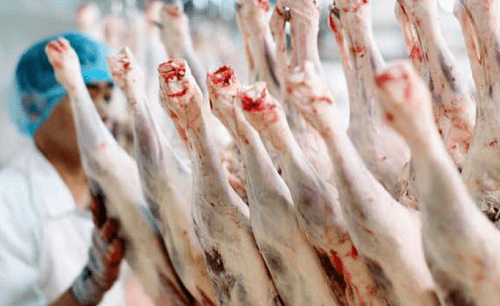
AUSTRALIAN domestic abattoir workers have undergone training to identify biosecurity problems and improve their emergency animal disease preparedness with the help of Federal Government funding.
Minister for Agriculture and Northern Australia David Littleproud said more than $450,000 has been invested to improve emergency animal disease capability at domestic abattoirs, recognising the central role of abattoir staff in the animal health system.
“Abattoir staff play a critical role in biosecurity by inspecting animals and carcases for signs of pests and disease.
“Australia exports over 70 percent of what we produce and the detection of an emergency animal disease has the potential to stop trade overnight,” Mr Littleproud said.
“Abattoir staff can play an important role in maintaining our market access through early identification and reporting.
“That is why the Australian Government is working with MINTRAC (National Meat Industry Training Advisory Council Limited) to develop new training and guidelines to better equip abattoir staff to undertake specific management activities during a response to an emergency animal disease,” he said.
“This work fulfills commitment outlined in the Commonwealth Biosecurity 2030 strategic roadmap and builds on a prior project funded under the Australian Government’s Agricultural Competitiveness White Paper in 2019.
“That project saw MINTRAC partner with industry and government to deliver emergency animal disease identification and reporting training at abattoirs, as well as introducing audit requirements for staff training and a site emergency animal disease response plan,” Mr Littleproud said.
“By the end of that project, hundreds of trainees reported greater confidence about how to take appropriate action if presented with signs of an unusual disease.”
EAD planning has been improved – MINTRAC
MINTRAC chief executive officer Mick Crouch said the major outcome of the $450,000 Domestic Slaughter Plant Project included industry adopting EAD planning and strategies and plants having a plan to execute should an outbreak take place.
The Domestic Slaughter Plant Project found that there was no regulatory requirement for registered premises to have an EAD response plan in place and that abattoirs and knackeries were typically unprepared for an EAD outbreak. Seventy six percent of premises reported that they did not have an EAD response plan and 65pc were not aware of the EAD Watch Hotline number. MINTRAC said this impacted upon the willingness of premises to report animal disease.
The project found that interaction with local government animal health and veterinary officers was infrequent, or not established, and typically only when a welfare report was made. This lack of emergency animal disease knowledge, training and communication posed an additional risk of diseases spreading unnoticed in regional areas, MINTRAC said.
Premises reported limited involvement in the provision of disease related producer feedback, with 90pc of abattoir and knackeries having the view that haulage companies should also undertake EAD training.
Mr Crouch said MINTRAC has been re-engaged to commence a phase 2 project to develop an EAD simulation so that industry can self-assess its preparedness for EAD incursion.
For more information and to read the full Domestic Slaughter Plant Project report click here.



HAVE YOUR SAY